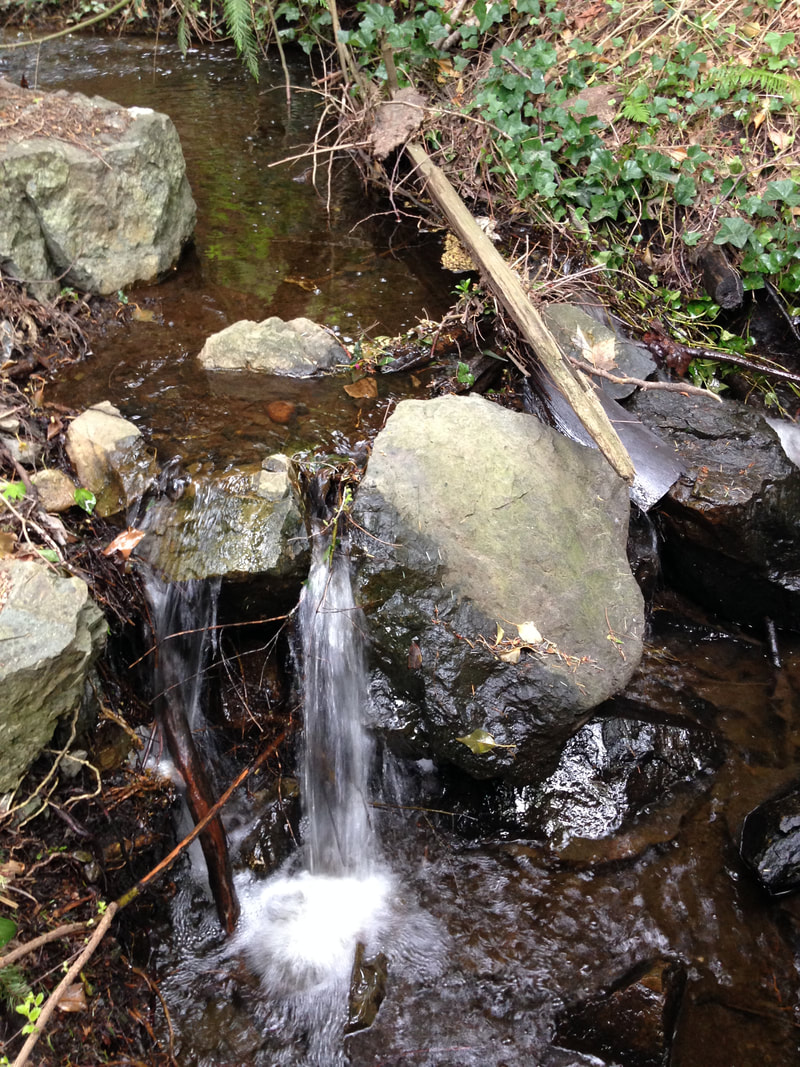|
As we reflect on 7 (!) years of restoration work in Walley Creek,
we are looking at priorities for the year ahead. When we began to work on restoration, our primary goal was to understand the creek, its past and current threats and places where it's thriving, and how humans can live more gently with this beautiful watercourse, and even enhance its health and ecological function. Much of our efforts have been focused on salmon, since they are such an important keystone species and receive the bulk of funding and expertise in the stream restoration world. However, we know that Walley Creek may never support a large population of Coho, and setting that as a goal may be ignoring the overall wetland and swamp characteristics of this watershed. We do know that Walley Creek supported resident cutthroat trout, from surveys done as part of the 1994 Fish Habitat Assessment, pg. 11 and 12 and the 1995 Nanaimo Urban Stream Enhancement Study, pg. 27 (see Resources). In the future, we're hoping to work with the Province on better understanding cutthroat trout populations in Walley Creek. These resident species of salmonid are also threatened or endangered in BC streams. When we did our initial stream survey in 2016/2017, we found many trout as we poked around undercut banks. When the creek experienced a disastrous dry spell in 2019, we worried many of the resident cutthroat died. NALT staff and biologists hope to do electrofishing or pit tagging surveys to estimate present cutthroat populations. Walley Creek (and all urban streams) experiences extremely high flows during rain events, and times in the dry season when the stream goes subsurface. These situations are very challenging for fish. They must find refuge in side channels during high flow events, and find pools that are cold and oxygenated enough for them to survive low and no-flow times. In addition, all life in the creek suffers during periods of drought. Going forward we hope to retain water through rain gardens, swales, and increasing the pervious area in the watershed. We also hope to learn from work MVIHES has done on Shelly Creek in Parksville that engaged hydrogeologists in creating a water balance model. A similar tool for Walley Creek would help us mitigate high flows and support the continuous base flows that have characterized this creek from the beginning. So, in 2024 our priorities will be ongoing flow monitoring with support from Provincial hydrologists and the BCCF flo-mo network, and water quality monitoring - RDN CWMN and BCCF 6-PPDQ testing. We will also continue to engage youth and community members in environmental stewardship through invasive removal and riparian protection and revegetation, in Morningside Park with Ecole Hammond Bay students, and with SD68 staff, students and families at the very top of the watershed, where Walley Creek passes Frank J. Ney school.
0 Comments
We have hardly begun, and already have a long list of questions about how to "improve" the creek. If we look at Walley Creek through the eyes of DFO, our goal should be to restore its salmon-bearing qualities. An obvious step in that direction would be to remove a large boulder that's acting as a fish barrier near the mouth of Walley Creek where it drains into the ocean. The rock is just a little too high for salmon to leap over, even with good fall flow. Describing this problem to people elicits really creative solutions. Get a crew of people together and roll it out to sea! Blast it out with dynamite! Put smaller rocks below it to create steps for the salmon to leap up! Tie a piece of rope around the rock and tie the other end to a truck and haul it out of there! Ah, not so fast says our biologist and consultant. If we remove the barrier, what are we allowing salmon access to? Coho salmon imprint on a certain area, but they are opportunistic. They will try going up a small creek to see if it offers good spawning habitat. If the habitat is poor, they'll swim back to sea and try somewhere else. If we allow them access to Walley Creek now, we're just wasting their time unless we actually improve the spawning habitat higher up. So for now the boulder is a low priority, while we consider our options for stream assessment. The satisfaction of removing it will have to wait. |
Categories
All
Archives
March 2024
|

 RSS Feed
RSS Feed
